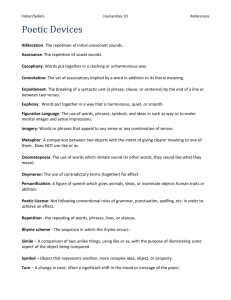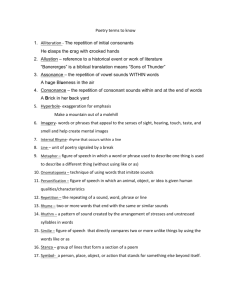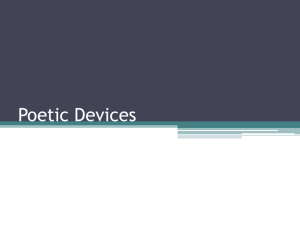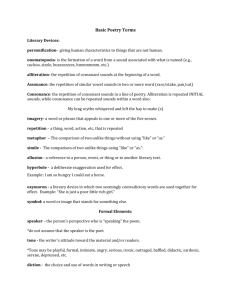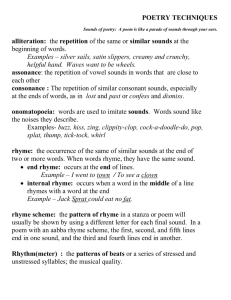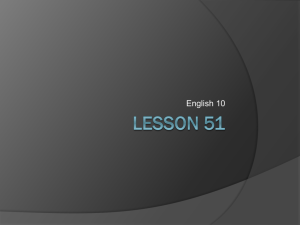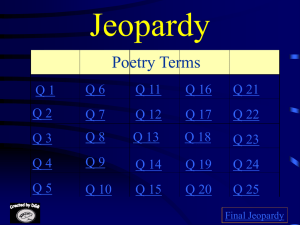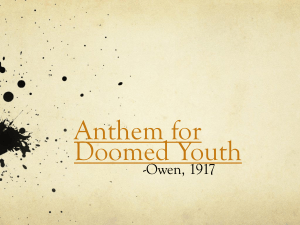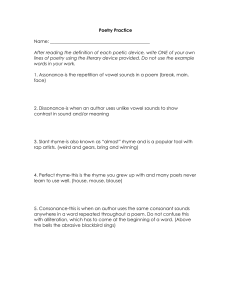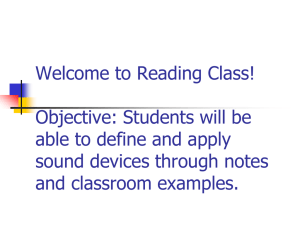Figures of Speech
advertisement
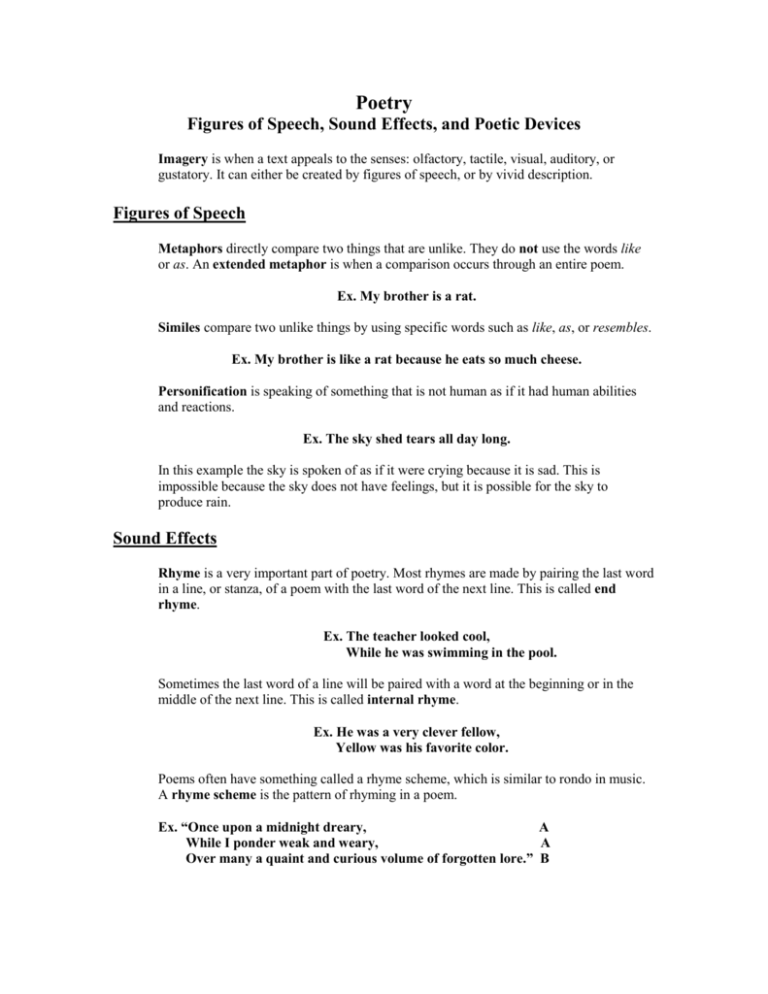
Poetry Figures of Speech, Sound Effects, and Poetic Devices Imagery is when a text appeals to the senses: olfactory, tactile, visual, auditory, or gustatory. It can either be created by figures of speech, or by vivid description. Figures of Speech Metaphors directly compare two things that are unlike. They do not use the words like or as. An extended metaphor is when a comparison occurs through an entire poem. Ex. My brother is a rat. Similes compare two unlike things by using specific words such as like, as, or resembles. Ex. My brother is like a rat because he eats so much cheese. Personification is speaking of something that is not human as if it had human abilities and reactions. Ex. The sky shed tears all day long. In this example the sky is spoken of as if it were crying because it is sad. This is impossible because the sky does not have feelings, but it is possible for the sky to produce rain. Sound Effects Rhyme is a very important part of poetry. Most rhymes are made by pairing the last word in a line, or stanza, of a poem with the last word of the next line. This is called end rhyme. Ex. The teacher looked cool, While he was swimming in the pool. Sometimes the last word of a line will be paired with a word at the beginning or in the middle of the next line. This is called internal rhyme. Ex. He was a very clever fellow, Yellow was his favorite color. Poems often have something called a rhyme scheme, which is similar to rondo in music. A rhyme scheme is the pattern of rhyming in a poem. Ex. “Once upon a midnight dreary, A While I ponder weak and weary, A Over many a quaint and curious volume of forgotten lore.” B In the above example, the rhyme scheme is AAB. The lines with an A rhyme with each other and the line with a B is by itself because it rhymes with nothing. Alliteration is the repetition of a single letter of the alphabet. Sometimes this repetition can imitate a sound. Ex. “Peter Piper picked a peck of pickled peppers.” Onomatopoeia is the use of words that imitate real sounds. Ex. Drip, drop, kerplunk, The leaking tap echoed. Sibilance is a repetition of “s” sounds, which usually results in a hissing sound being created in a text. Other Poetic Devices Enjambment is the continuation from one line to the next with no pause or punctuation. Ex. The rush of the chase Filled me with the most terrifying fear That my heart would explode End the end was near. The effect of enjambment is that the poem is read more quickly and it seems more exciting, dangerous, or urgent. Cacophony is the use of harsh sounds in literary composition, for poetic effect. Cacophony can be created by assonance or consonance, but is usually created by the repetition of consonant sounds. The following is cacophonous. Ex. The buzz of the saw crackled As it devilishly devoured the log. Euphony creates agreeable sounds, especially by the way that the words are pronounced. Euphony can be created by assonance or consonance, but is usually created by the repetition of vowel sounds. The following is euphonious. Ex. “The only other sound’s the sweep, Of easy wind and downy flake.” Examine the excerpt from Upon Julia’s Voice and identify sound effects that appear within it. So smooth, so sweet, so silvery is thy voice, As, could they hear, the Damned would make no noise, But listen to thee (walking in thy chamber) Melting melodious words to Lutes of Amber. Robert Herrick Note: All of the above techniques are used with purpose in poetry. Through analysis, the reader must decipher what the intention of the poet (or speaker) is emphasizing with the application of the technique.
